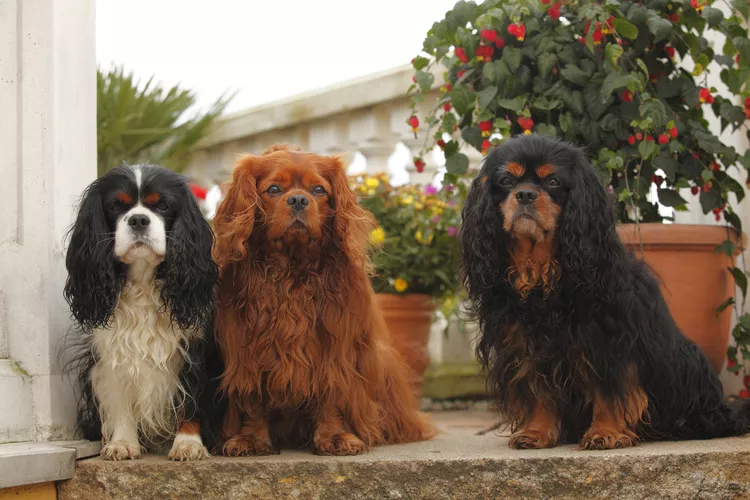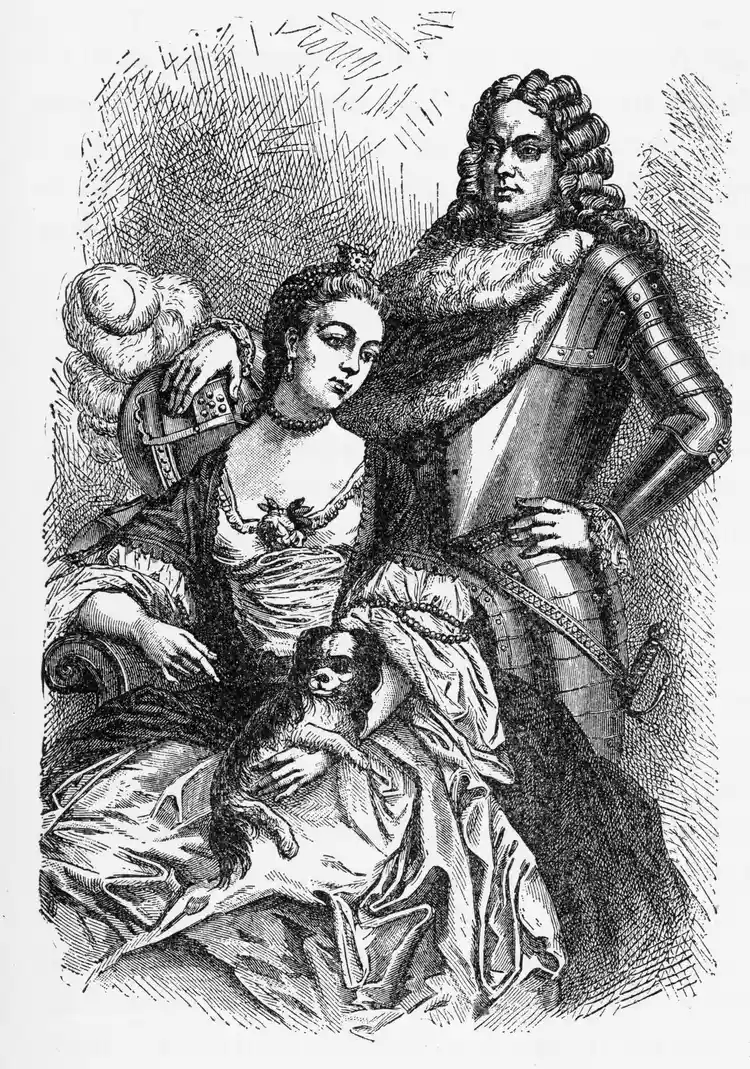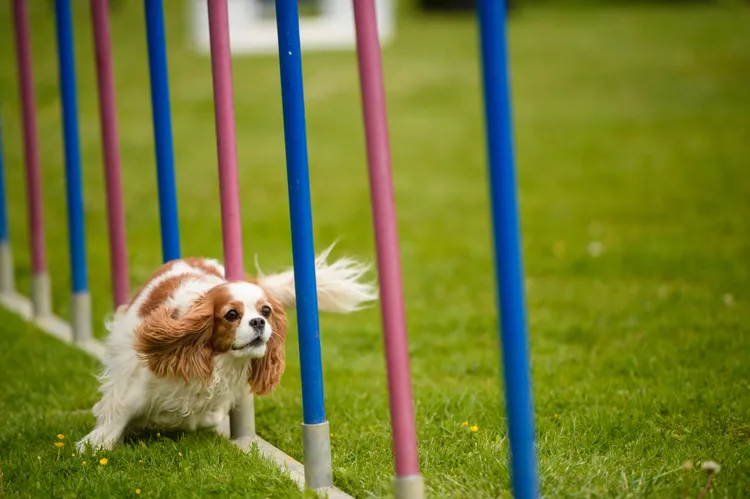History, Care Tips, and Essential Information for Pet Owners
The Cavalier King Charles Spaniel, renowned for its affectionate nature and regal appearance, is one of the largest and most beloved toy breeds. Often described as the perfect lap dog, this breed is characterized by its silky, wavy coat, short legs, floppy ears, and distinctive feathered features. Although officially recognized by the American Kennel Club in 1995, its lineage stretches back to a noble and royal past.

Breed Overview
- Group: Toy
- Height: 12 to 13 inches (to the withers)
- Weight: 13 to 18 pounds
- Coat: Long, sleek, and silky with feathering on ears, feet, chest, and tail
- Coat Colors: Tricolor, Blenheim (red and white), ruby, and black and tan
- Lifespan: 12 to 14 years
- Temperament: Playful, affectionate, patient, graceful, sociable, gentle
- Hypoallergenic: No
- Origin: England
Characteristics of the Cavalier King Charles Spaniel
Cavalier King Charles Spaniels are known for their exceptional affection, sociability, and eagerness to please. They generally thrive in the company of humans and other dogs, making them well-suited for homes where they won’t be left alone for extended periods. They make excellent family pets and are also popular with seniors due to their gentle and non-demanding nature. However, it’s important to guide children on how to interact appropriately with these dogs, respecting their need for rest during sleep and meal times.
- Affection Level: High
- Friendliness: High
- Kid-Friendly: High
- Pet-Friendly: High
- Exercise Needs: Medium
- Playfulness: Medium
- Energy Level: Medium
- Trainability: High
- Intelligence: Medium
- Tendency to Bark: Medium
- Amount of Shedding: Medium
History of the Cavalier King Charles Spaniel
This charming breed has been associated with European nobility, especially in England, since the 17th century. Originally known as toy spaniels, they were favorites of King Charles I and his son, King Charles II, who was so fond of them that he allowed them in all public buildings, including Parliament. The Blenheim color variant was named after the Duke of Marlborough’s home, Blenheim Palace, where the breed was also cherished.

Queen Victoria’s fondness for the breed is notable, with her cavalier, Dash, being a close childhood companion. The breed underwent changes in appearance due to crossbreeding with flatter-faced companion breeds from Asia, leading to the development of the English toy spaniel, also known as the King Charles Spaniel in the UK. In the 1920s, enthusiasts worked to recreate the appearance of the spaniels from King Charles II’s era, resulting in the modern Cavalier King Charles Spaniel. The breed’s popularity has continued to rise, with the American Kennel Club officially recognizing it in 1995 and ranking it 18th in popularity by 2018.

Cavalier King Charles Spaniel Care
While Cavaliers enjoy cuddling on the sofa, they are not mere couch potatoes. They benefit from regular exercise and mental stimulation. Their coat requires regular grooming to prevent tangles and mats, especially around the ears.
Exercise
Cavalier King Charles Spaniels appreciate daily walks of 30 to 60 minutes. Adding playtime, such as fetching, can help meet their exercise needs.
Grooming
This breed’s feathered coat requires regular brushing to prevent matting, particularly around the ears and feet. Some owners opt for professional grooming or coat clipping to simplify maintenance. Cavaliers shed moderately, but with proper grooming, their coat remains manageable.

Training
Cavaliers are eager to please and highly motivated by food, making them responsive to positive reinforcement training methods. They excel in activities like agility and obedience but should have a reliable recall to manage their hunting instincts.
Common Health Problems
Cavalier King Charles Spaniels are prone to several inherited health issues. It is essential to choose a reputable breeder who performs health screenings on the parents. Common health problems include:
- Heart Disease: Particularly Mitral Valve Disease (MVD), which starts as a heart murmur and can lead to heart failure.
- Syringomyelia (SM): A condition causing fluid-filled cavities in the spinal cord, leading to severe discomfort and pain.
- Joint Problems: Hip dysplasia and luxating patella are common.
- Eye Problems: Including cataracts, dry eye syndrome, cherry eye, and corneal ulcers.
Diet and Nutrition
Feed your Cavalier King Charles Spaniel a high-quality, appropriately portioned diet formulated for toy or small breeds. Monitor their weight closely to prevent obesity. Slow-feed bowls or interactive toys can help manage their appetite if they eat quickly.

Where to Adopt or Buy a Cavalier King Charles Spaniel
Due to the breed’s popularity, avoid unscrupulous breeders and puppy mills. Ensure that you see the puppies in a nurturing environment and verify that the puppy is at least eight weeks old, fully weaned, and has had a vet check. Prices typically range from $1,000 to $2,500.
Consider adopting from rescue organizations like the Cavalier King Charles Spaniel Club or Cavalier Rescue USA for a loving alternative to buying.
Cavalier King Charles Spaniel Overview
Pros:
- Ideal for family or multi-pet households
- Eager to please and responsive to positive training
- Adaptable energy levels for various types of walks
Cons:
- Prone to multiple inheritable health conditions
- Requires high-maintenance grooming
- Susceptible to obesity
More Dog Breeds and Further Research
If the Cavalier King Charles Spaniel seems like a good fit, explore similar breeds such as the Japanese Chin, Brittany Spaniel, or Cavapoo (a mix of Cavalier King Charles Spaniel and Poodle) to find the right match for your lifestyle.
FAQ
Are Cavalier King Charles Spaniels aggressive? Generally, no. They are not known for aggression but may become withdrawn if they are in pain or left alone too long. They are well-suited for multi-pet households.
Is this breed suitable for apartment living? Yes, their small size and calm demeanor make them ideal for apartment living, provided they get moderate outdoor exercise.
Is the Cavalier King Charles Spaniel a good choice for first-time dog owners? Yes, this breed’s gentle nature and ease of training make it a great option for first-time owners. They do require grooming and need lots of companionship to avoid separation anxiety.





